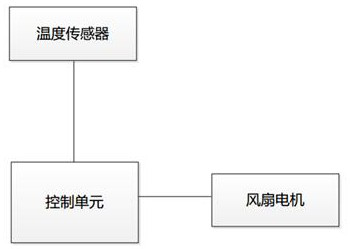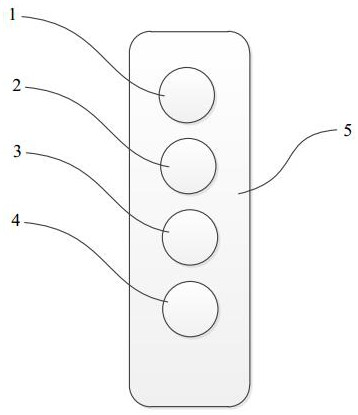Control method and system for temperature-sensing variable frequency fan
A variable frequency fan and control method technology, which is applied in the direction of pump control, non-variable pumps, pumps, etc., can solve problems such as unfavorable conditions, improve human comfort, and single control method, achieve simple and effective control methods, and improve human body feeling , a wide range of applications
- Summary
- Abstract
- Description
- Claims
- Application Information
AI Technical Summary
Problems solved by technology
Method used
Image
Examples
Embodiment Construction
[0022] The present invention will be further elaborated below in conjunction with the accompanying drawings.
[0023] refer to figure 1 As shown, one embodiment of the present invention is a control system for a temperature-sensitive variable frequency fan. The system includes a temperature sensor and a control unit. The aforementioned temperature sensor is connected to the control unit, and the control unit is connected to the fan motor. When the fan is in use, the above-mentioned temperature sensor can be installed inside the outer shell of the fan. Since the material of the fan shell usually does not block the temperature, the temperature value collected by the temperature sensor in the outer shell is basically close to the environment where the fan is located. temperature. The foregoing control unit can adopt a single-chip microcomputer module or a central processing unit procured on the market, which will not be described in detail here. Under the structure of the forego...
PUM
 Login to View More
Login to View More Abstract
Description
Claims
Application Information
 Login to View More
Login to View More - R&D
- Intellectual Property
- Life Sciences
- Materials
- Tech Scout
- Unparalleled Data Quality
- Higher Quality Content
- 60% Fewer Hallucinations
Browse by: Latest US Patents, China's latest patents, Technical Efficacy Thesaurus, Application Domain, Technology Topic, Popular Technical Reports.
© 2025 PatSnap. All rights reserved.Legal|Privacy policy|Modern Slavery Act Transparency Statement|Sitemap|About US| Contact US: help@patsnap.com



